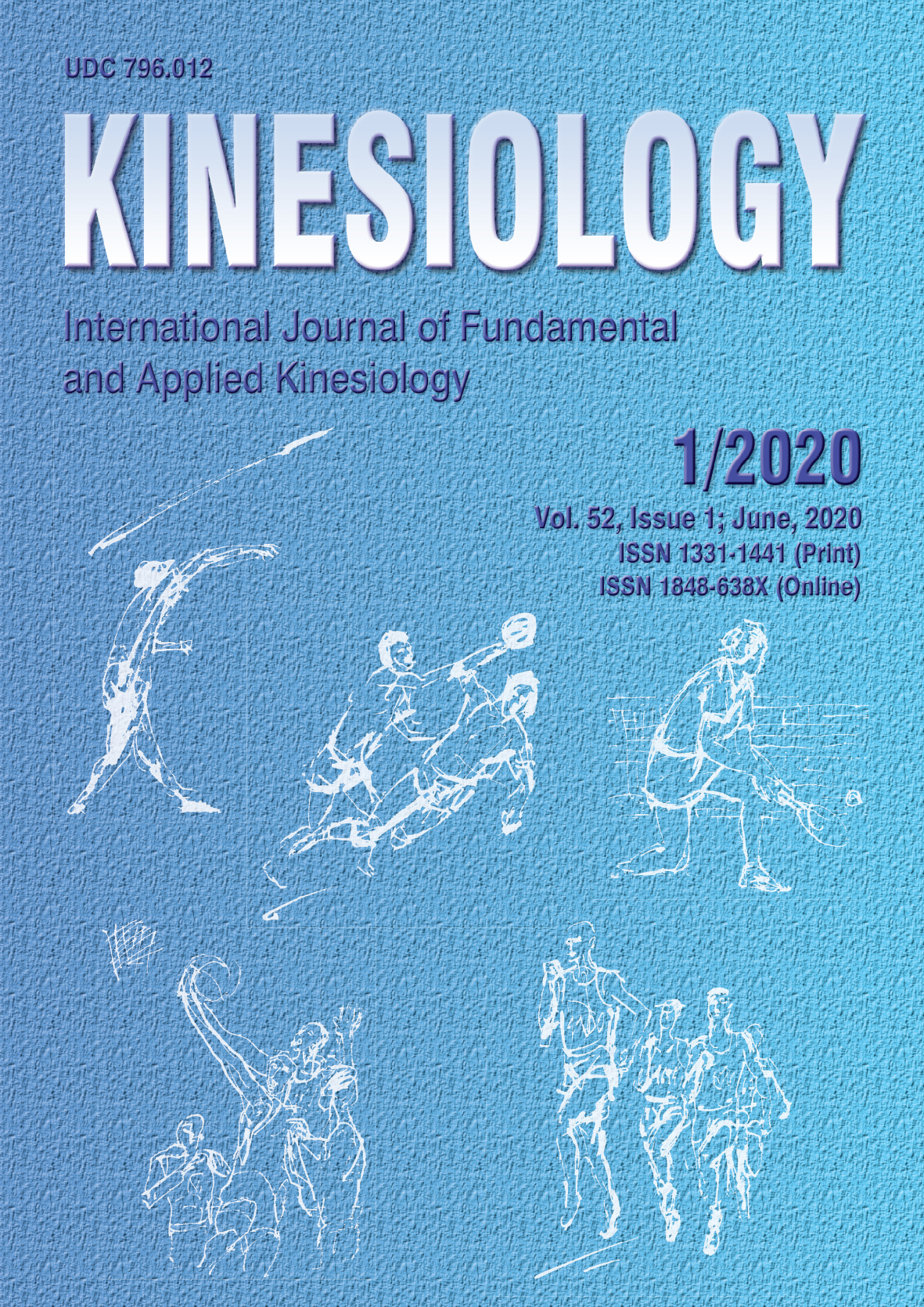Alterations in redox homeostasis following repeated sprint training program
Abstract
This study examined the effects of a 6-week repeated sprint training program on redox-based homeostasis and its association with muscle damage. Fifteen male physical education students (aged 20.0 ± 1.0 years; body weight 77.7 ± 6.0 kg; height 181.0 ± 4.4 cm; % body fat 8.7 ± 3.0 %) familiar with intermittent activities volunteered to participate in the study. Experimental training program consisted of 2-3 sets of 6-10 straight-line or shuttle 20-meter repeated sprints with departures every 25 seconds and 2-minute inter-set passive recovery. The training intervention lasted for six weeks during which 18 training sessions were performed. The levels of 15-F2t-isoprostanes were measured in plasma and 24-hour urine; superoxide dismutase, glutathione peroxidase and glutathione reductase in erythrocytes; uric acid and creatine kinase in serum after; the first, and the penultimate training session. The level of muscle damage following repeated sprint exercise was not significantly altered (402 to 496 U/L; p=.151) and had no significant associations with changes in marker depicting redox-homeostasis. A significant increase in plasma 15-F2t-isoprostanes (0.32 to 0.56 ng/mL; p=.026), and subsequent decrease in glutathione reductase (1070.4 to 502.9 U/g Hb; p<.001) were observed. Urinary 15-F2t-isoprostane levels were 25% greater in post-training, although this increase did not reach statistical significance. These results indicate that repeated sprint training program stimulates the equilibrium in redox homeostasis developing antioxidant protection to the constantly increasing training load.
Downloads
Published
How to Cite
Issue
Section
License
Copyright (c) 2020 Kinesiology

This work is licensed under a Creative Commons Attribution-NonCommercial 4.0 International License.
At Faculty of Kinesiology we recognize that access to quality research is vital to the scientific community and beyond. Kinesiology is non-profit journal and all costs of publishing and peer review process are covered by the publisher itself or other funding sources like Ministry of Science and Education of the Republic of Croatia. Full text papers are also available free of charge at http://hrcak.srce.hr/kineziologija. There are no restrictions on self archiving of any form of paper (preprint, postprint and publisher's version).
Articles are distributed under the terms of the CC BY - NC 4.0
Kinesiology does not charge any fees to authors to submit or publish articles in our journal.


